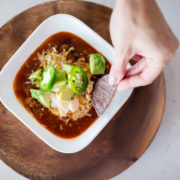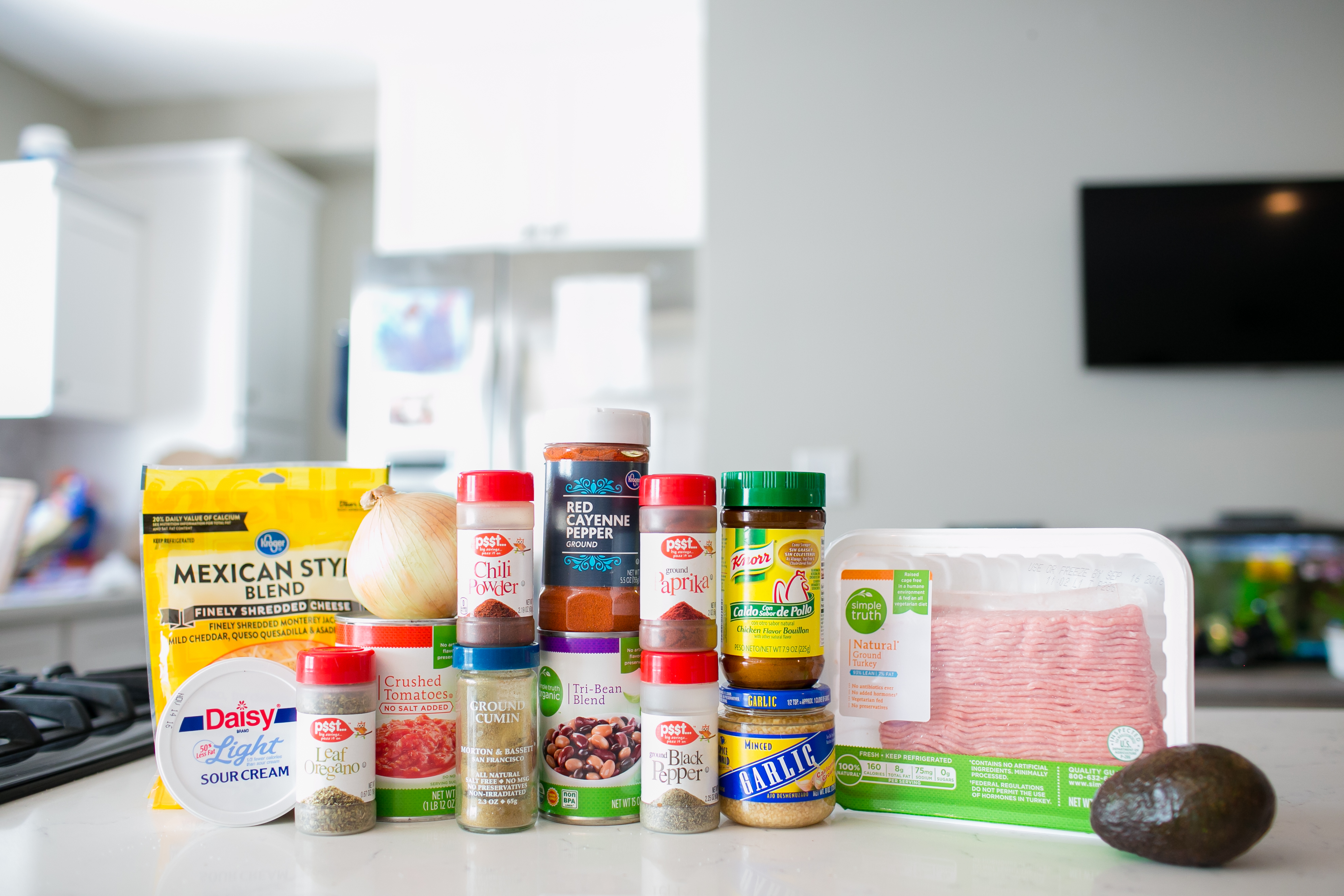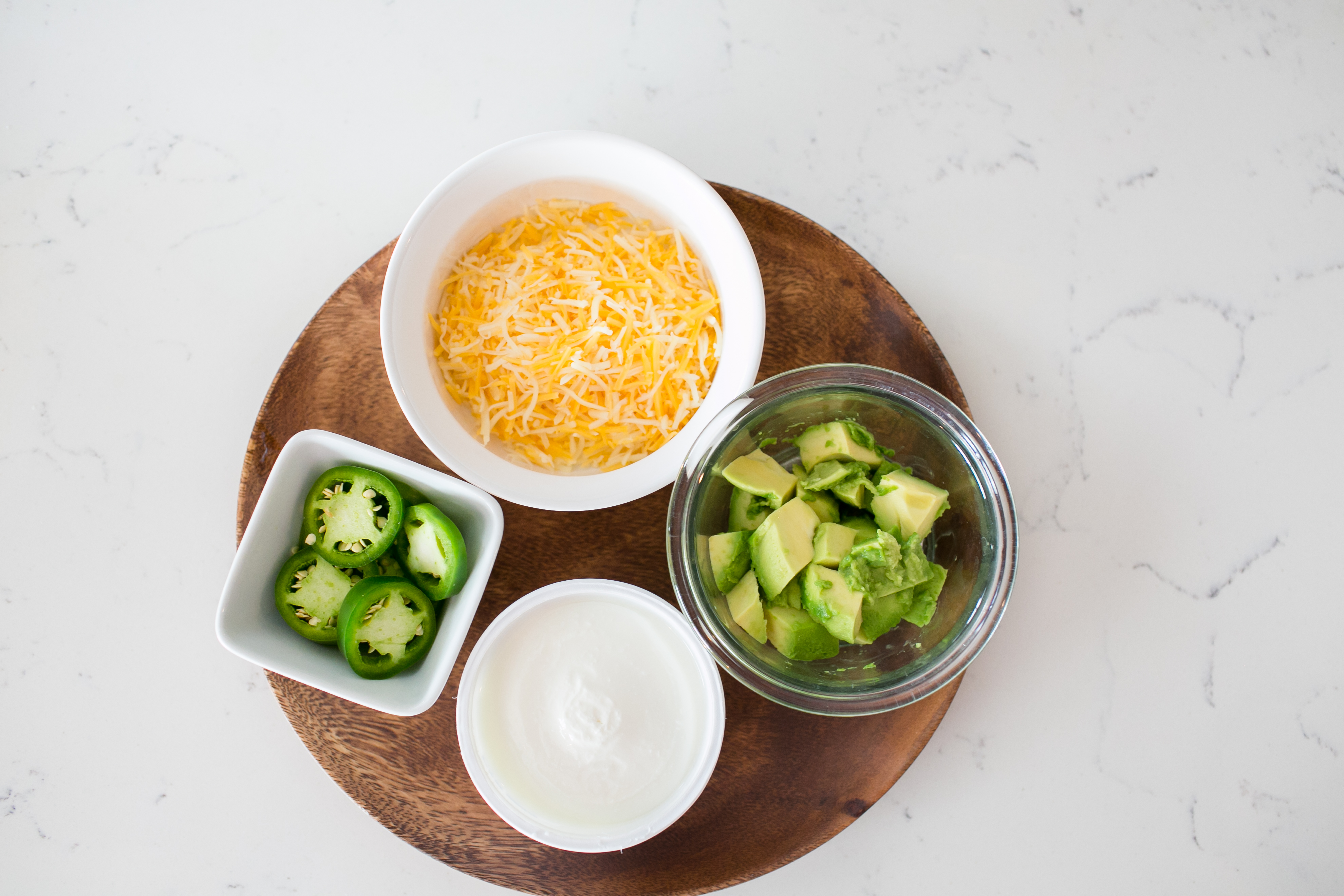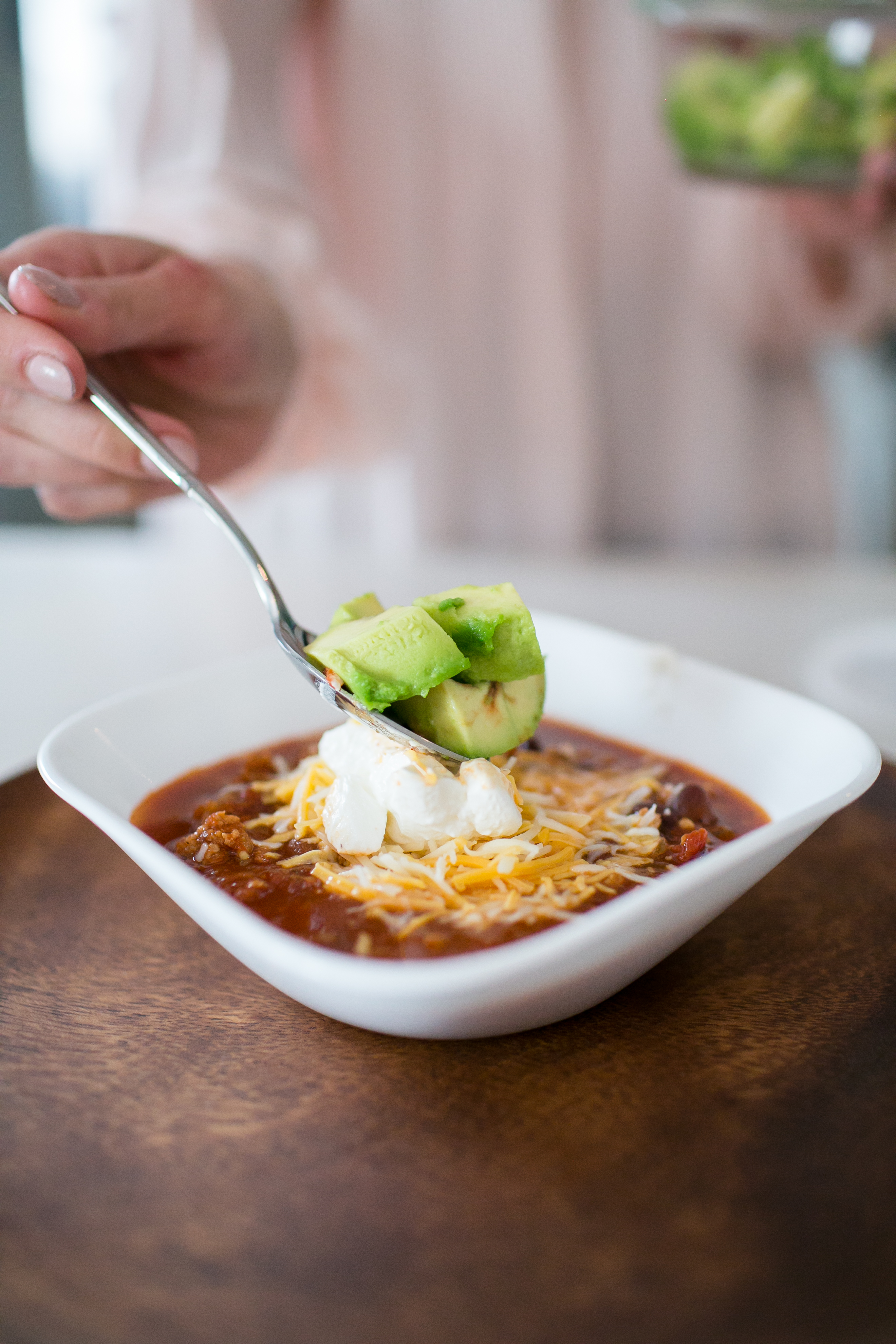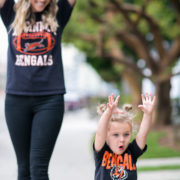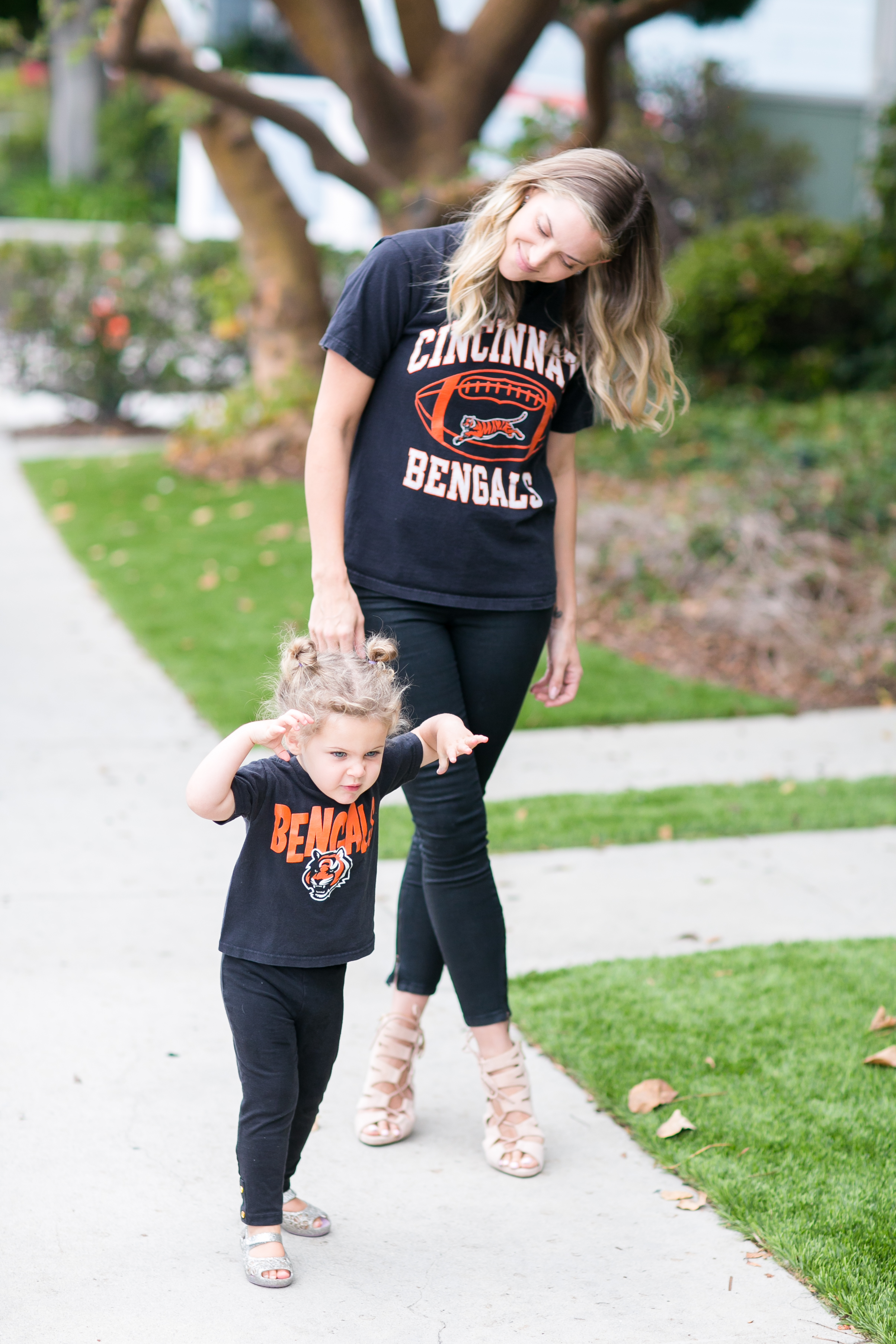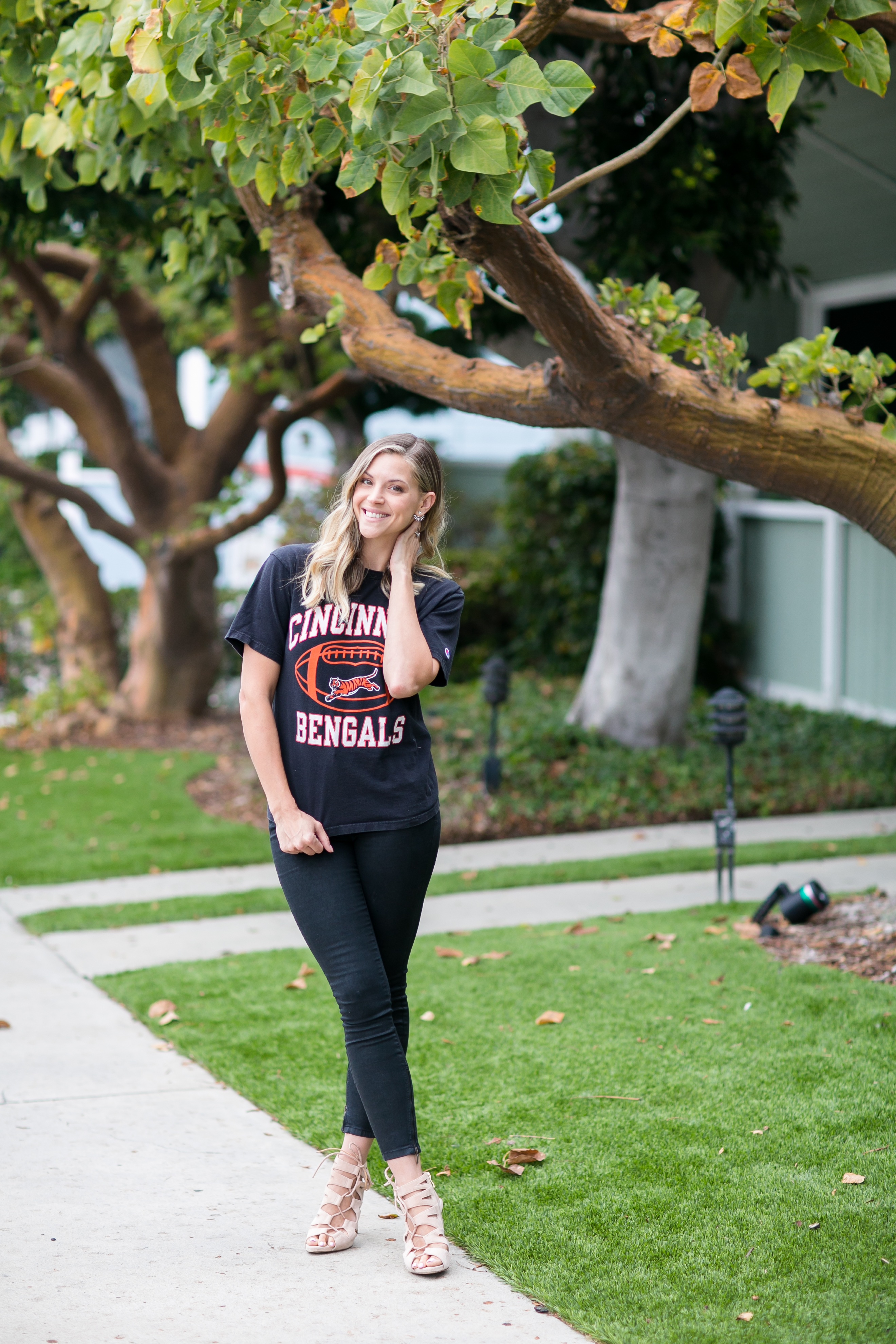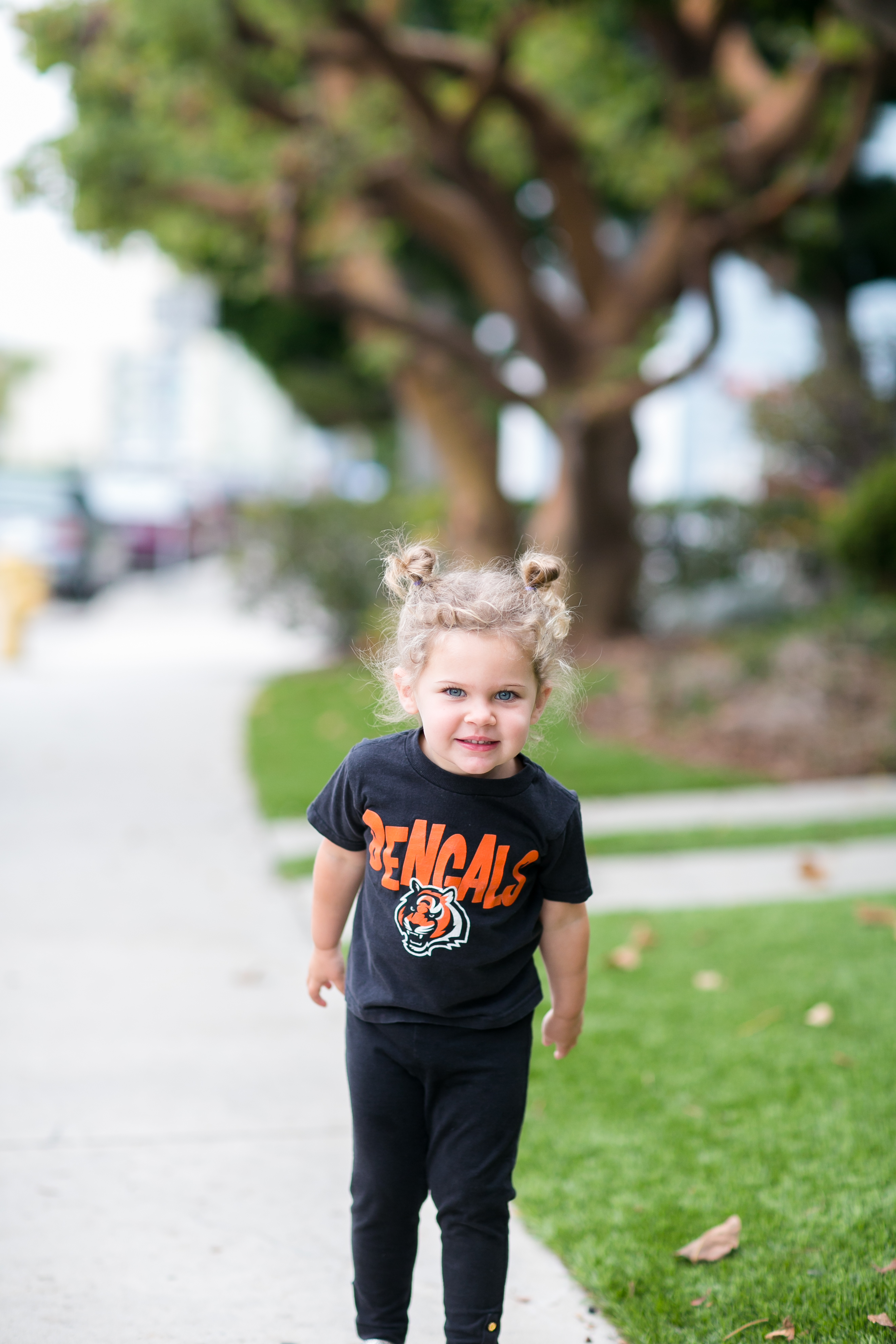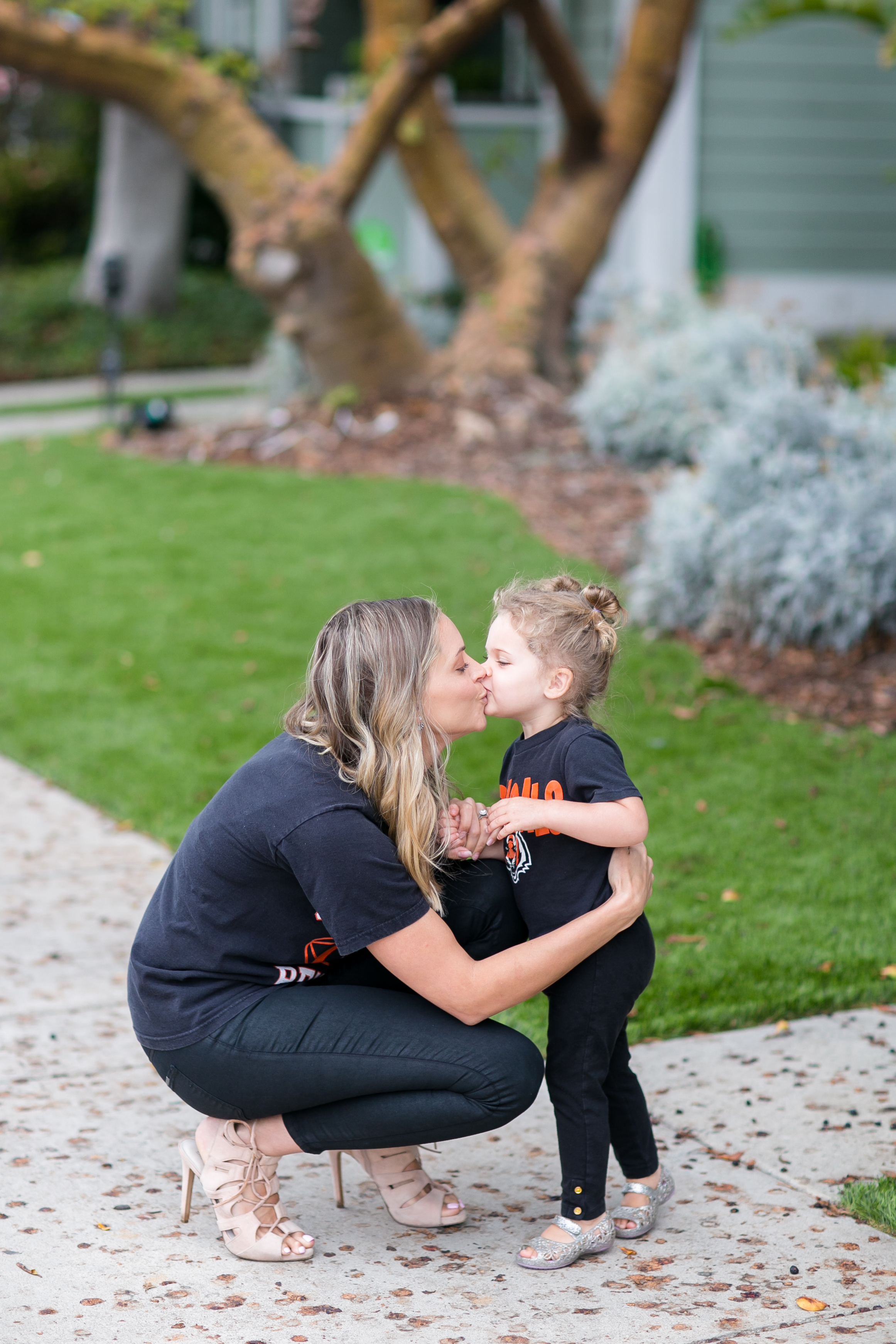The Easiest Turkey Chili Recipe
So during football season and throughout the fall I have a serious obsession with cooking Turkey Chili. I make it for my family and friends at least once a week (if not more), and it is a perfect way to feed a large amount of people if you are hosting. I found this recipe years ago on All Recipes and doctored it up a bit to make it my own. It is seriously delicious! See the ingredient list and cooking instructions below:
1 1/2 teaspoons olive oil
1 pound ground turkey
1 medium yellow onion, chopped
1 cup chicken stock
1 cup water
1 (28 oz) can organic crushed tomatoes
1 (16 oz) can organic tri-blend beans, crushed (the recipe calls for kidney beans)
1 tablespoon garlic, minced
2 tablespoons chili powder
1/2 teaspoon paprika
1/2 teaspoon dried oregano
1/2 teaspoon ground cayenne pepper (I tend to leave this out if children will be eating)
1/2 teaspoon ground cumin
1/2 teaspoon salt
1/2 black pepper
Garnish Bar: avocado (cubed), diced red onion, shredded cheese, sour cream, jalapeños (sliced), and tortilla chips
DIRECTIONS:
Heat the oil in a large pot over medium heat. Place turkey in the pot, and cook until evenly brown. Stir in onion, and cook until tender.
Pour chicken stock and water into the pot. Mix in tomatoes, beans, and garlic. Season chili powder, paprika, oregano, cayenne pepper (optional), cumin, salt, and pepper. Bring to a boil. Reduce heat to low, cover, and simmer 30 minutes. Top with your favorite garnish!
Photo Credit: Kate Hauschka Photography

